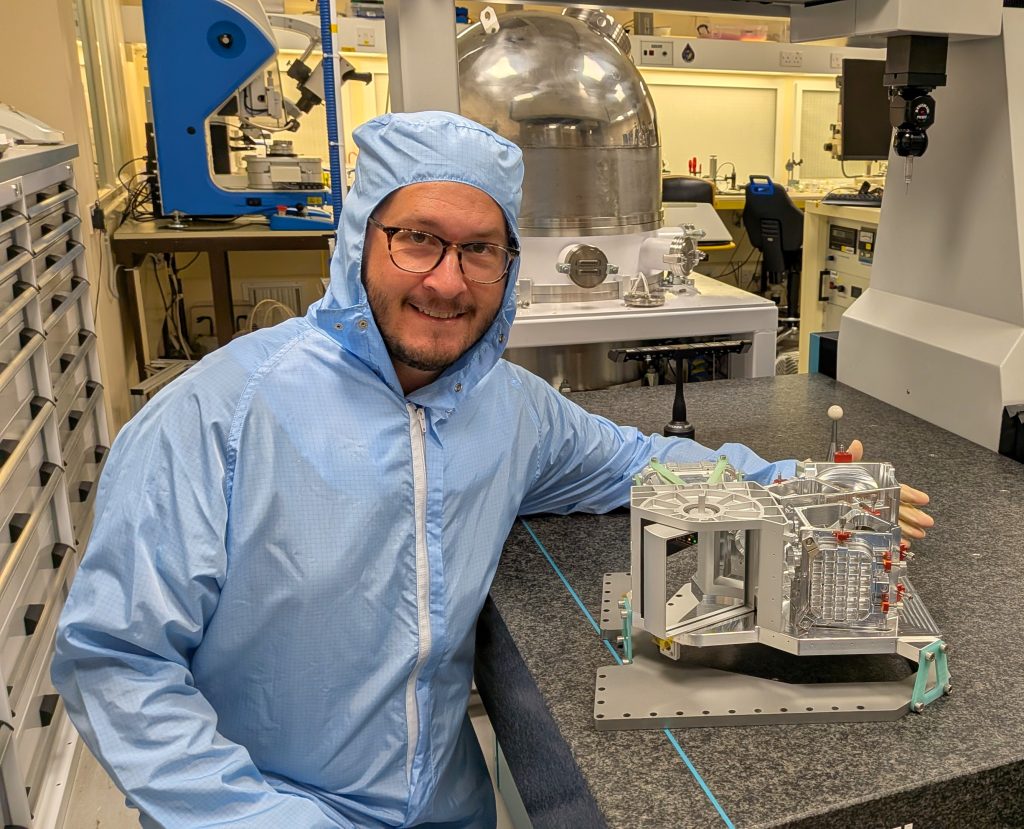The European Space Agency (ESA) has announced its preliminary selection of payloads for its future Mars missions and the results include an instrument which received early development funding from the CEOI for application to greenhouse gas monitoring in Earth’s atmosphere.
BEBOP (Broadband Exploration with Bolometric Optics) is a thermal imaging system tasked with enabling accurate weather forecasting on Mars to improve the safety of robotic or human explorers on the surface.
The primary scientific objective of BEBOP is to characterise the contemporary climate of Mars, to determine the origin of large dust storms, and to learn how to predict these storms.
BEBOP works by scanning across the visible side of Mars from north to south, to create a set of images of the entire side of the planet in view. An image is created for each of 16 infrared filters. Each image measures light coming from Mars at a different wavelength, and subtle differences between them provides information about what is going on in the atmosphere.
BEBOP was derived from Broad Horizons, a thermal imaging instrument which received funding from CEOI and is designed to make observations of the Earth from a medium orbit to obtain near-global coverage of greenhouse gas emission. This is crucial in the monitoring of climate change.
While the team from the University of Oxford and Durham University looked for opportunities to launch Broad Horizons, their concept directly led to BEBOP.
Dr Kevin Olsen, Principal Investigator for BEBOP, said: “BEBOP will be capable of making frequent measurements of the temperature of the Martian atmosphere and surface, as well as how much dust is suspended in the atmosphere.
“It will do this over nearly the whole planet and with spatial resolution of a few kilometres. While some aspects of the Martian atmosphere can be reconstructed in simulations, being able to actually predict how it is changing is a data-limited problem.
“Of critical importance will be learning what causes dust storms to form and build, especially into the global phenomena that encircle the red planet once a decade.”
Dr Olsen said funding from CEOI was vital for the eventual development of BEBOP as it allowed the team to prove it could build an optical system that used science in the way they wanted, raising the Technology Readiness Level and proving that the Broad Horizons technology worked in the lab.
Not only that, the funding afforded the team time to iron out the details and write a technically sound proposal, in time to respond to ESA’s call for instrument proposals for the LightShip missions to Mars. This included a completed design to demonstrate exactly how the optics work and how data is captured.
Both Broad Horizons and BEBOP are based on the Lunar Trailblazer’s Lunar Thermal Mapper (LTM) which was launched towards the Moon in February 2025. In order to move from observing the Moon-observing LTM design to the Mars-facing BEBOP, the telescope field-of-view needed to be widened, employing detectors with a higher density of pixels – exactly what the Broad Horizons development provided.




